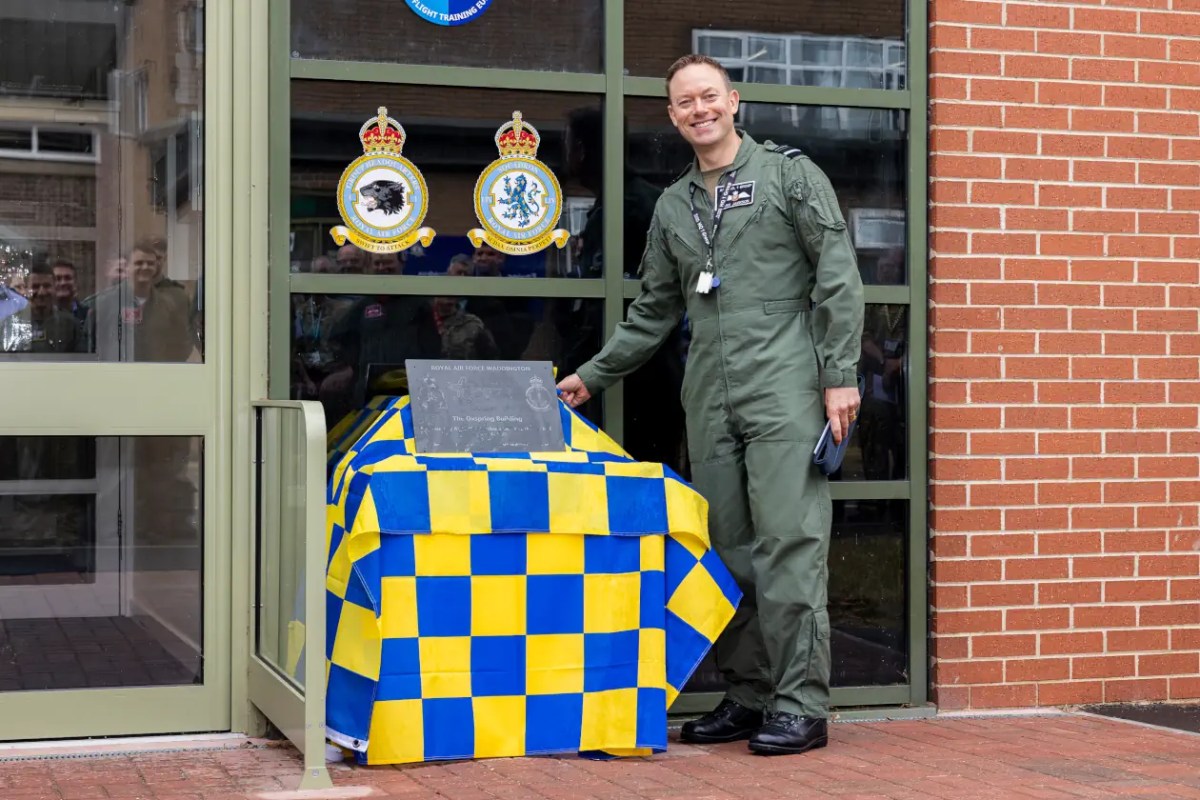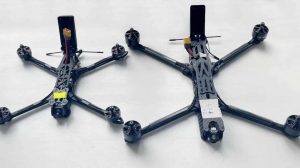Protector Training Centre Inaugurated at RAF Waddington: A Landmark for RAF Drone Operations
The launch of the Protector Training Centre at RAF Waddington signifies a pivotal advancement for both the Royal Air Force and the broader landscape of military aviation within the UK. This cutting-edge facility serves as a central hub for the next generation of aircrew, showcasing international cooperation and the rapid technological shifts transforming defense.
Understanding the Protector Programme
The Protector RG Mk1, the UK’s latest remotely piloted air system (RPAS), is set to replace the MQ-9A Reaper. This represents more than a mere update; it embodies a fundamental enhancement in capabilities. As the first RPAS certified to navigate all airspace classes in the UK, both civilian and military, the Protector can soar up to 40,000 feet and sustain missions for over 30 hours, offering persistent intelligence, surveillance, target acquisition, and reconnaissance (ISTAR), plus strike mission capabilities.
Why Waddington? Why at This Time?
RAF Waddington has long been the UK’s ISTAR hub, hosting squadrons specializing in airborne surveillance. The integration of the Protector secures its status as the leading site for modern unmanned aviation in the UK. This timing is crucial; after years of development, testing, and personnel training (initially in the US and now in the UK), the Protector is officially operational. The training facility’s opening aligns with this shift, ensuring readiness as the Reaper is phased out by late 2025.
Inside the Training Facility
The new Protector Training Centre, named the Oxspring Building after RAF legend Group Captain Bobby Oxspring, is more than a simple collection of classrooms. It contains:
- Ground control stations for remote operation during simulations and live missions
- Advanced flight simulators for synthetic training covering both routine and emergency situations
- Real and virtual classrooms merging live and synthetic instruction
- Training support for NATO allies as part of NATO’s Flight Training Europe Campus
This centre provides over 30 multi-skilled courses for ISTAR operators, enhancing the skill set of RAF and allied personnel for current and future platforms, managed by 54 Squadron, the Advanced Air ISTAR Academy.
Protector’s Unique Capabilities
| Feature | Protector RG Mk1 | Reaper (Predecessor) |
|---|---|---|
| UK Airspace Certification | Yes (all classes) | No |
| Max Altitude | 40,000 ft | 50,000 ft (theoretical), less certified |
| Endurance | >30 hours | 20-24 hours |
| Weapons | Paveway IV bombs, Brimstone missiles | Similar, less advanced integration |
| Navigation | Advanced satellite and autonomous systems | Conventional |
| Detect & Avoid Tech | Yes (certified for civil airspace) | Limited |
| Deployment | Minimal on-site crew, global reach | Similar, but less autonomy |
The Protector’s advanced detect-and-avoid system enables safe coexistence with civilian aircraft, enhancing both surveillance and security capabilities domestically and internationally. Armed with Brimstone programmable missiles and Paveway IV laser-guided bombs, it offers precision strike capabilities. Its high-tech sensors deliver real-time, high-quality intelligence.
The Human Element
RAF Waddington’s new facility highlights a collaborative effort involving RAF personnel, civil servants, and industry partners. Air Vice-Marshal Mark Jackson emphasized the world-class nature of the centre, crediting the teamwork and dedication of everyone involved. 54 Squadron further consolidates its leadership in training Protector crews, fostering trust and interoperability with NATO allies, underscoring the UK’s leadership within the alliance.
International Impact: NATO and Future Training
The NATO Flight Training Europe Campus at Waddington is a significant asset, supported by the NATO Support and Procurement Agency and 17 member nations, thus serving as a High Visibility Project under NATO. It prepares both UK and allied aircrews for multinational training, standardization, and readiness.
Allan McLeod from the NSPA remarked on the facility’s establishment, underscoring NATO nations’ collaborative achievements and the integration of innovative capabilities like the Protector into Alliance frameworks.
Implications for the RAF and UK Defense
- The protector’s induction is planned for initial operational capability in 2025 with its first batch of eight out of sixteen drones.
- Its endurance and autonomy make it ideal for rapid deployment, responding swiftly to threats or disasters.
- Beyond counter-terrorism and border security, it will support allied forces globally, maintaining a critical role in the UK’s defense posture.
Reallife Scenarios and Training
Training at the new centre goes beyond theoretical and simulated environments. Crews undergo comprehensive mission profiles encompassing emergency maneuvers, target acquisition, and strike scenarios alongside live and synthetic exercises. Initial RAF Protector crews experienced intensive training in the US before transitioning all activities to the UK.
Looking Ahead
- Further testing and validation of Protector systems are planned through summer 2025, before the full transition from Reaper.
- Protector’s evolving role will continue to be supported by the Oxspring Building, inspiring future unmanned systems and digital warfare strategies.
- The NATO-supported training centre at Waddington serves as a model for allied drone training globally.
Human Stories and Brand Values
Behind the technical success is a story of teamwork and heritage, as the dedication to Group Captain Bobby Oxspring acknowledges the RAF’s history. Early RAF Protector crews speak of the remarkable advancements of the new system, while simulator instructors recount the learning curve faced by seasoned Reaper crews, fostering pride and camaraderie.
Conclusion
The inauguration of the Protector Training Centre at RAF Waddington is more than a simple ceremony—it’s the commencement of a new chapter in UK and NATO air operations. This advanced facility supports one of the most sophisticated military drones, unites allies, and honors history and innovation. As training gains momentum, the upcoming generation of aircrews is prepared to protect, observe, and react to an ever-changing global environment.
For those with an interest in drone technology, defense advances, or the future of air capabilities, RAF Waddington remains at the heart of the UK’s unmanned aviation revolution.













